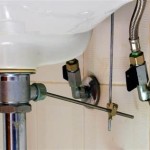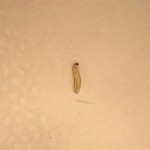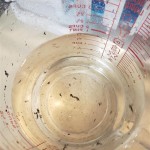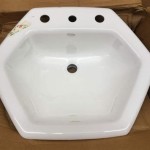How To Remove a Large Glued Bathroom Mirror
Removing a large, glued bathroom mirror can be a challenging task, but with patience, the right tools, and careful execution, it is a manageable project. The primary concern is preventing damage to the surrounding wall and the mirror itself, especially if the intention is to reuse the mirror. The adhesive used to secure the mirror is typically strong and designed for permanent bonding, making removal without breakage or wall damage a delicate process.
Before commencing, it is vital to understand the risks involved. The mirror could shatter during removal, creating sharp shards that pose a safety hazard. The wall behind the mirror could also be damaged, requiring patching and repainting. It is essential to prepare the workspace, gather the necessary tools, and proceed with caution to minimize these potential problems.
1. Preparation and Safety Measures
Preparation is paramount when removing a large glued bathroom mirror. The first step is to protect oneself and the surrounding area. Safety glasses are essential to protect the eyes from flying glass shards. Heavy-duty work gloves are crucial for handling the mirror and preventing cuts. A dust mask or respirator is recommended, particularly if the removal process generates dust or debris.
Covering the floor beneath the mirror with a drop cloth or heavy cardboard is necessary to protect the flooring from damage and to facilitate easier cleanup. Clear the area around the mirror, removing any obstacles that could hinder movement or pose a tripping hazard. Ensure adequate lighting to provide a clear view of the work area.
Before starting the removal process, it is advisable to inspect the mirror's edges and the surrounding wall. Look for any existing cracks or weaknesses in the mirror or wall. These areas will require extra care during removal. It is also beneficial to determine the type of adhesive used to secure the mirror. Information about the adhesive might be found on the original packaging or from the mirror's installer. Knowing the adhesive type can inform the best removal strategy.
If electrical outlets or wiring are located near the mirror, it is crucial to turn off the power to the circuit breaker that controls those outlets before commencing any work. This precaution will prevent electrical shock and ensure safety throughout the removal process. Double-check that the power is off by testing the outlets with a voltage tester before proceeding.
2. Initial Separation and Adhesive Loosening
The initial step in removing the mirror involves separating it from the wall. This requires carefully working around the edges of the mirror to create a small gap. One method is to use a thin, flexible putty knife or a specialized mirror removal tool. Gently insert the tool between the mirror and the wall, working along the perimeter. Apply steady, even pressure to avoid cracking the mirror.
Avoid forcing the tool too aggressively, as this can damage the wall or the mirror. The goal is to slowly and gradually create a gap large enough to insert other tools or apply adhesive solvents. Patience is key during this stage. Working slowly and methodically around the entire perimeter of the mirror will increase the chances of a clean separation.
Once a small gap has been established, various methods can be employed to loosen the adhesive. One common technique involves using a heat gun. Apply heat to the edges of the mirror, focusing on the areas where the adhesive is located. The heat will soften the adhesive, making it easier to separate the mirror from the wall. Use caution when applying heat to avoid overheating the mirror, which could cause it to crack.
Another option is to use adhesive solvents. Several commercially available adhesive removers are designed to dissolve or weaken the glue. Apply the solvent along the edges of the mirror, allowing it to penetrate between the mirror and the wall. Follow the manufacturer's instructions for application and safety precautions. It may be necessary to apply multiple coats of solvent and allow sufficient time for it to work before attempting to further separate the mirror.
Piano wire or fishing line can also be used to cut through the adhesive. Thread the wire or line behind the mirror, using the gap created earlier. Gently saw back and forth to cut through the adhesive. This method requires patience and a steady hand to avoid damaging the wall or the mirror. Work slowly and apply even pressure to ensure a clean cut.
3. The Removal Process and Addressing Remaining Adhesive
With the adhesive loosened and a significant gap created, the mirror should be ready for removal. If the mirror is large and heavy, it is crucial to have assistance to prevent it from falling and shattering. Enlist the help of at least one or two other people to support the mirror during the removal process.
Carefully grip the mirror from the front, ensuring a secure hold. Gently pull the mirror away from the wall, working from the top or bottom. If resistance is encountered, stop and reassess the situation. Additional adhesive solvent or heat may be necessary to further loosen the bond. Avoid applying excessive force, as this could cause the mirror to break.
Once the mirror is removed, inspect the wall for any remaining adhesive. Several methods can be used to remove the residual glue. A scraper or putty knife can be used to carefully scrape off the adhesive. Apply gentle pressure and avoid gouging the wall. Adhesive solvents can also be used to soften the remaining glue, making it easier to remove.
A heat gun can also be effective in softening the adhesive. Apply heat to the glue, being careful not to overheat the wall. Once the adhesive is softened, it can be scraped off with a putty knife. For stubborn adhesive residue, consider using a specialized adhesive remover designed for surfaces such as drywall or plaster. Follow the manufacturer's instructions for application and safety precautions.
After removing the adhesive, the wall may require patching and repainting. Use a drywall compound to fill any holes or imperfections. Allow the compound to dry completely before sanding it smooth. Apply primer to the patched areas and then repaint the entire wall to ensure a uniform finish.
Safe disposal of the mirror is crucial. If the mirror is intact, consider donating it to a charitable organization or offering it for sale. If the mirror is broken, carefully wrap the shards in heavy cardboard or newspaper to prevent injuries. Dispose of the wrapped shards in a designated waste container.
Consider using alternative mounting methods with less harsh adhesive for future mirror installations. Mechanical fasteners, such as screws and anchors, offer a more reversible solution for securing mirrors to walls. If adhesive is necessary, choose a less aggressive adhesive that is specifically designed for mirror installations and is easier to remove in the future.
Regular maintenance can also help prolong the life of the mirror and prevent the need for removal. Clean the mirror regularly with a mild glass cleaner and a soft cloth. Avoid using abrasive cleaners, as these can scratch the surface of the mirror. Periodically inspect the mirror for any signs of damage, such as cracks or chips, and address them promptly to prevent further deterioration.

How To Remove A Bathroom Mirror Lowe S

How To Remove A Mirror Glued The Wall Forbes Home

How To Safely And Easily Remove A Large Bathroom Builder Mirror From The Wall Site Title

How To Safely And Easily Remove A Large Bathroom Builder Mirror From The Wall Site Title

How To Safely And Easily Remove A Large Bathroom Builder Mirror From The Wall Site Title

How To Safely And Easily Remove A Large Bathroom Builder Mirror From The Wall Site Title

How To Remove Mirror Off Wallsafely

Removing A Glued On Mirror From Wall

How To Remove A Glued Bathroom Mirror From The Wall

How To Remove A Frameless Mirror Like Nervous Grandma
Related Posts







